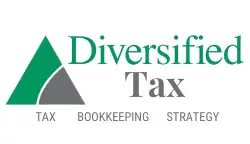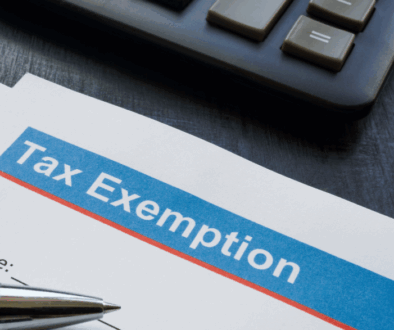Understanding the 2024 Tax Bracket
Table of Contents
Understanding the 2024 Tax Bracket
Navigating the intricacies of the tax system can be daunting, especially with annual changes in tax brackets and regulations. As we approach the 2024 tax season, it’s crucial to understand how the federal income tax brackets will affect your financial planning. This guide will delve into the 2024 tax brackets, their implications, and strategies to optimize your tax situation.
The Basics of Tax Brackets
Tax brackets represent the range of income levels that are taxed at specific rates. The U.S. employs a progressive tax system, meaning that as your income increases, so does the rate at which it is taxed. Understanding how these brackets work is essential for determining your tax obligations.
What is a Tax Bracket?
A tax bracket is essentially a threshold that defines how much tax you owe based on your income. The U.S. tax system has several brackets, each corresponding to a different tax rate. For 2024, there are seven federal income tax rates, ranging from 10% to 37%.
How Tax Brackets Work
When calculating your tax, it’s important to note that not all of your income is taxed at the same rate. Instead, your income is divided into chunks that fall into different brackets:
- The first portion of your income is taxed at the lowest rate.
- As you earn more, the additional income is taxed at progressively higher rates.
This structure means that even if you are in a higher tax bracket, only the income above the threshold for that bracket is taxed at the higher rate.
The 2024 Federal Income Tax Brackets
The IRS adjusts tax brackets annually to account for inflation, which helps prevent “bracket creep”—a situation where taxpayers are pushed into higher brackets due to inflation rather than actual increases in real income. Here are the federal income tax brackets for 2024:
Tax Rates and Income Ranges
| Tax Rate | Single Filers | Head of Household | Married Filing Jointly | Married Filing Separately |
|---|---|---|---|---|
| 10% | $0 to $11,600 | $0 to $16,550 | $0 to $23,200 | $0 to $11,600 |
| 12% | $11,601 to $47,150 | $16,551 to $63,100 | $23,201 to $94,300 | $11,601 to $47,150 |
| 22% | $47,151 to $100,525 | $63,101 to $100,500 | $94,301 to $201,050 | $47,151 to $100,525 |
| 24% | $100,526 to $191,950 | $100,501 to $191,950 | $201,051 to $383,900 | $100,526 to $191,950 |
| 32% | $191,951 to $243,725 | $191,951 to $243,700 | $383,901 to $487,450 | $191,951 to $243,725 |
| 35% | $243,726 to $609,350 | $243,701 to $609,350 | $487,451 to $731,200 | $243,726 to $365,600 |
| 37% | $609,351 or more | $609,351 or more | $731,201 or more | $365,601 or more |
Implications of the 2024 Brackets
For single filers, the first $11,600 of income is taxed at the lowest rate of 10%. As income increases, the rate applies to the next segments of income. This progressive tax system ensures that taxpayers only pay higher rates on income that exceeds the thresholds.
Understanding Effective vs. Marginal Tax Rates
It’s vital to differentiate between effective and marginal tax rates when planning your finances.
Marginal Tax Rate
Your marginal tax rate is the highest rate you pay on your last dollar of income. For instance, if you are a single filer with a taxable income of $70,000, your marginal tax rate would be 22%. However, this does not mean that all your income is taxed at this rate.
Effective Tax Rate
Your effective tax rate is calculated by taking the total tax you owe and dividing it by your total income. This rate is generally lower than your marginal tax rate because only a portion of your income is taxed at the highest rate.
Example Calculation
If a single filer with a taxable income of $70,000 pays $10,453 in taxes, the effective tax rate would be approximately 14.9% ($10,453 ÷ $70,000). This effective rate is lower than the marginal rate of 22%.
The Role of Deductions and Credits
Tax deductions and credits can significantly affect your tax liability, allowing you to reduce your taxable income or the amount of tax owed.
Standard Deduction
For the 2024 tax year, the standard deduction for single filers is set at $14,600. This means that if you do not itemize your deductions, you can subtract this amount from your gross income, thereby lowering your taxable income.
Itemized Deductions
If your eligible expenses exceed the standard deduction, you may benefit from itemizing. Common itemized deductions include mortgage interest, state and local taxes, and charitable contributions.
Tax Credits
Tax credits directly reduce your tax bill dollar-for-dollar. They can be more beneficial than deductions since they lower the actual amount owed. Examples include the Child Tax Credit and education credits.
Planning for Tax Season
As tax season approaches, it’s essential to prepare adequately to ensure you maximize your deductions and credits.
Organizing Financial Documents
Gather all necessary financial documents well in advance. This includes W-2s, 1099s, and receipts for deductible expenses. Having everything organized will streamline the filing process.
Understanding Filing Options
You have several options for filing your taxes, including:
- Self-filing: Using tax software or paper forms.
- Professional assistance: Hiring a tax professional to navigate complex situations.
- Free filing programs: Utilizing IRS resources for eligible taxpayers.
The Importance of Tax Planning
Effective tax planning can help you minimize your tax burden and maximize savings.
Strategies for Reducing Taxable Income
To lower your taxable income, consider the following strategies:
- Contribute to retirement accounts: Contributions to 401(k)s or IRAs can reduce your taxable income.
- Utilize Health Savings Accounts (HSAs): Contributions to HSAs are tax-deductible and can lower your tax bill.
- Invest in tax-efficient funds: Consider funds that minimize capital gains distributions.
Timing Income and Deductions
The timing of income and deductible expenses can also affect your tax liability. For instance, if you anticipate being in a lower tax bracket next year, you may want to defer income until the following year.
Tax Bracket Changes for 2025
Looking ahead, the IRS has already announced adjustments for the 2025 tax year, which will impact how taxpayers plan their finances.
Anticipated Changes
While the tax rates remain the same, the income thresholds for each bracket will increase slightly to account for inflation. This means that taxpayers may find themselves in a more favorable position if their income does not increase significantly.
Planning for Future Tax Changes
Understanding these anticipated changes allows taxpayers to strategize effectively. Monitoring potential future tax legislation can also provide insights into possible adjustments that could affect your financial planning.
Conclusion: Staying Informed and Prepared
Navigating the complexities of the 2024 tax bracket requires awareness and proactive planning. By understanding how tax brackets function, differentiating between effective and marginal rates, and utilizing deductions and credits, you can optimize your tax situation.
As tax laws and brackets evolve, staying informed will empower you to make sound financial decisions. Whether you choose to file independently or seek professional assistance, being prepared will ensure you are ready for tax season and can maximize your potential savings.




